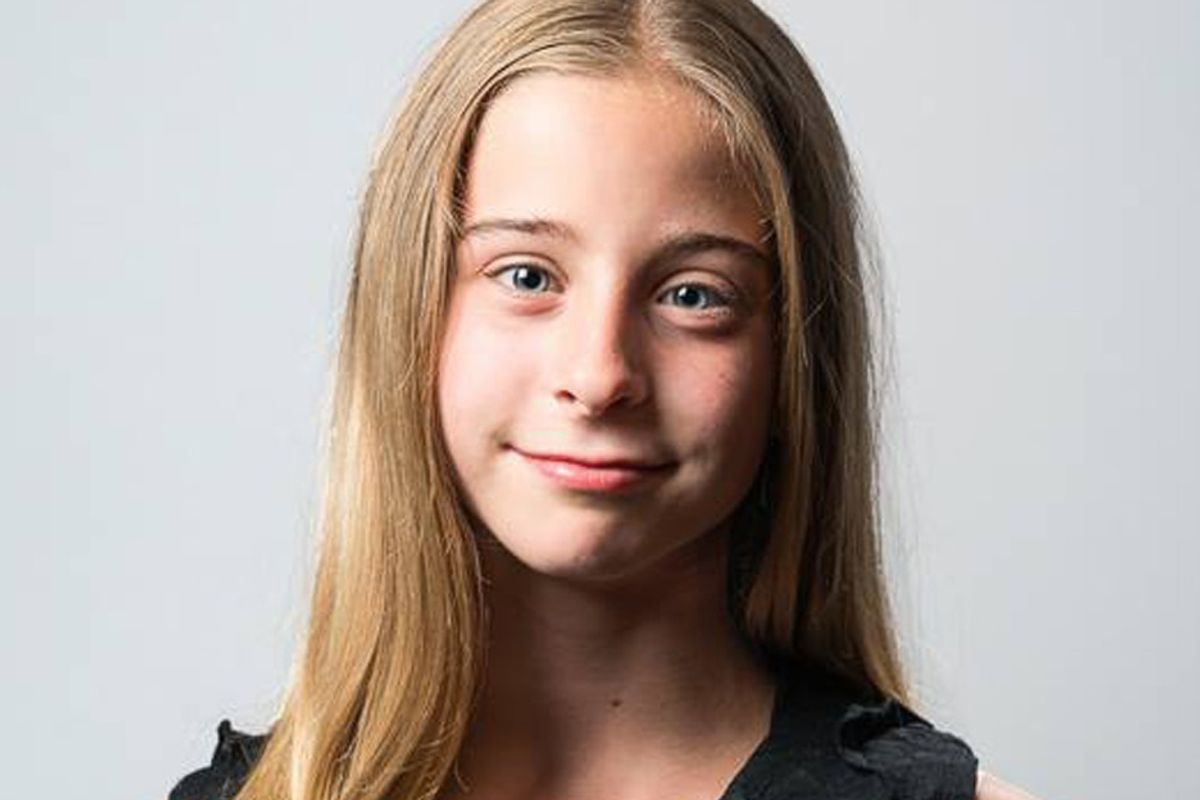17 photos of adorable kids who were born prematurely, now holding their own baby pictures
Love this so much!

Chloé was born at 32 weeks.
Every single day, babies across the world are born prematurely, which means that they're born before 37 weeks of gestation.
In Canada, about 29,000 infants are born prematurely each year, roughly 1 in every 13. But in the United States, around 400,000 to 500,000 are born early. That's about 1 in every 8 to 10 babies born in the U.S.!
Red Méthot, a Canadian photographer and student, decided to capture the resilience of many of these kids for a school photography project.
He's the father of two prematurely born kids himself, so the topic is important to him.
"My son was born at 29 weeks and my daughter at 33 weeks," he told Upworthy a phone interview. "These are the kind of pictures I would like to have seen when my first child was born — they've been through that, and they are great now."
Méthot said he knows not all preemie stories have a happy ending—one of his photos features a child whose twin passed away after they were born prematurely—but for so many kids who come early, they go on to experience a great life.
Meet several of the beautiful kids he photographed:

1. Lexiani, born at 25 weeks
Original. All photos belong to Red Méthot, who gave me permission to share them here.

2. Noah and Nathan, born at 32 weeks
Original.All photos belong to Red Méthot, who gave me permission to share them here.

3. Margot, born at 29 weeks
Original.All photos belong to Red Méthot, who gave me permission to share them here.

4. Thomas, born at 23 weeks
Original.All photos belong to Red Méthot, who gave me permission to share them here.

5. Samuel, born at 36 weeks, and his sister Alice, born at 27 weeks
Original.All photos belong to Red Méthot, who gave me permission to share them here.

6. Éva, born at 29 weeks
Original.All photos belong to Red Méthot, who gave me permission to share them here.

7. Charles, born at 26 weeks
Original.All photos belong to Red Méthot, who gave me permission to share them here.

8. Chloé, born at 32 weeks
Original.All photos belong to Red Méthot, who gave me permission to share them here.

9. Félix, born at 24 weeks
OriginalAll photos belong to Red Méthot, who gave me permission to share them here.

10. Felix, born at 23 weeks, and his brother Alexis, born at almost 33 weeks
Original.All photos belong to Red Méthot, who gave me permission to share them here.

11. Noah, born at 32 weeks; his twin sister, Victoria (on the left in the framed picture), passed away when she was one month old
Original.All photos belong to Red Méthot, who gave me permission to share them here.

12. Juliette, born at 30 weeks
Original.All photos belong to Red Méthot, who gave me permission to share them here.

13. Léonard, born at 35 weeks
Original.All photos belong to Red Méthot, who gave me permission to share them here.

14. Olivier, born at 31 weeks, his sister Ariane, born at 33 weeks, and their brother Noah, born at 34 weeks.
Original.All photos belong to Red Méthot, who gave me permission to share them here.

15. Émile, born at 26 weeks
Orignal.All photos belong to Red Méthot, who gave me permission to share them here.

16. Théo, born at 25 weeks
Original.All photos belong to Red Méthot, who gave me permission to share them here.

17. Charles-Antoine and Mara, born at 27 weeks
Original.All photos belong to Red Méthot, who gave me permission to share them here.
Méthot's school project originally consisted of 10 photos, but the reaction has been so positive and he's enjoyed taking them so much, he continued adding to the collection.
Currently, he has captured 50 images. (You can view them all in the album on his Facebook page!). Méthot told Upworthy that his favorite part of the project has been meeting the subjects.
"Each time I meet a new person, I [learn] about a new story," he said.
And I think we can all agree that Méthot is a wonderful storyteller through his photography. Between his photos showing the bright future so many premature babies have and the loss of others, he captures reality beautifully.
This article originally appeared ten years ago.

